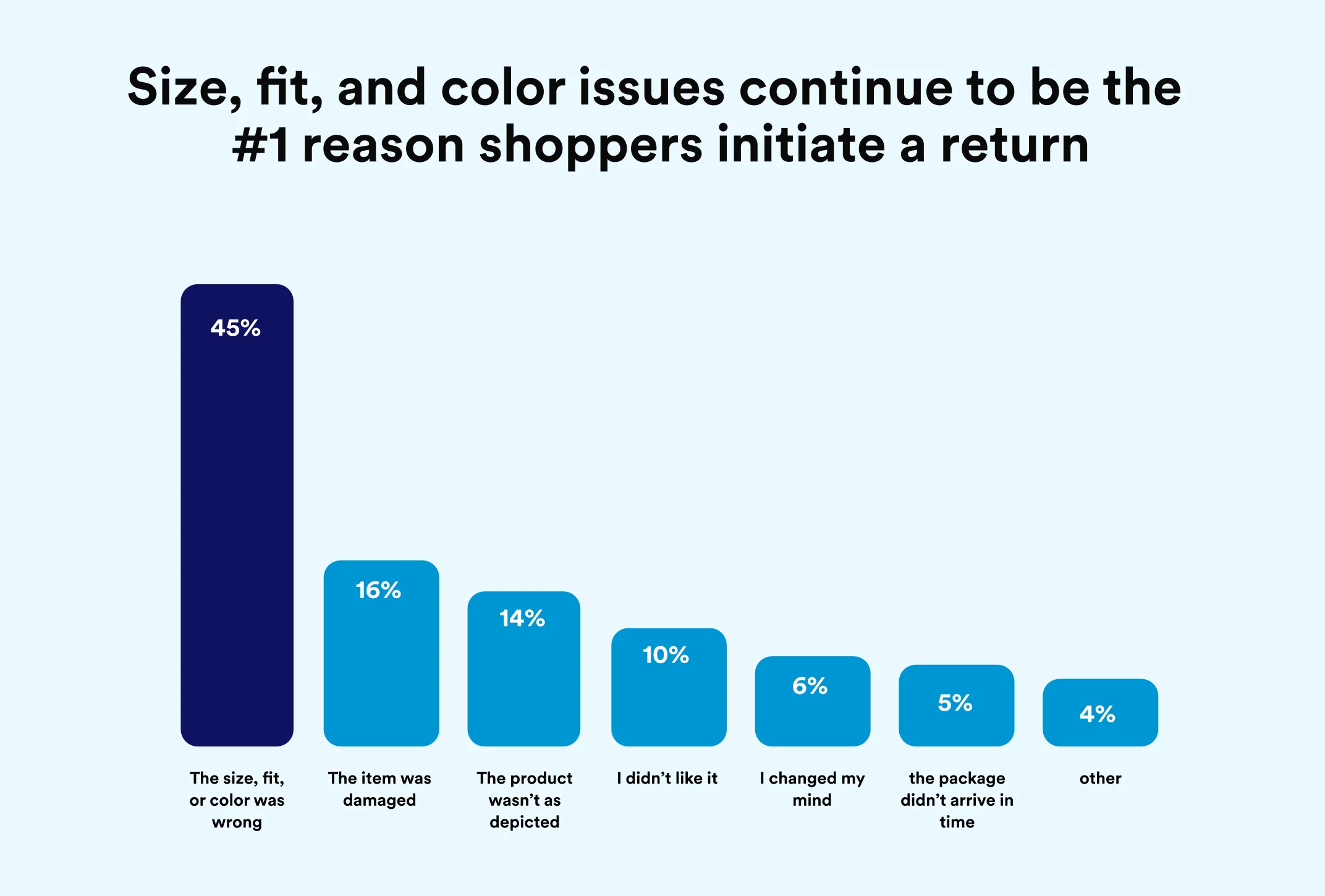
AI-powered delivery date estimates to boost conversion
Give shoppers peace of mind and protect and grow your bottom line
Personalized tracking experiences to build brand loyalty
Returns and exchanges management to mitigate fraud and reward best customers
Proactive communication to drive customer lifetime value
Delivery claim management to tackle fraud and build trust
5 Ways to Get Returns Back Faster
%20(42).webp)
Looking for ways to make 2023 your best year ever?—Start with returns. Specifically, start by embracing opportunities to make your returns process faster and more efficient. Anywhere from 13% to 20% of all retail purchases are returned. By encouraging faster returns, you'll expand available inventory for future purchases and you're more likely to recoup the cost of the item via resale. To help you get on your way, here are 5 ways to get returns back faster to your business.
Incentivize customers to initiate returns faster
The sooner merchandise is returned to inventory, the more likely it is to be sold at full price. Taking a tiered approach to your return policy is an excellent way to balance customer expectations with your own financial considerations. Consider offering certain VIP shoppers an extended return window, while encouraging less-valuable one-off buyers to get their returns back faster.
For example, Saks Fifth Avenue offers free shipping on returns initiated within 14 days of the ship date. For returns outside that window, Saks deducts $9.95 from customer’s refund to cover shipping on return.
Another example?—Sephora. They only offer credit to customers on the original form of payment for returns received within 30 days of purchase. For those received between 31 and 60 days of purchase, they only offer store credit.
Add convenience to the return process
Customers want value, but they also want complete convenience. When it comes to returns, that means retailers need to offer methods that don’t involve re-boxing products, printing return labels, or waiting in line at the post office. Tap into a broad network of return locations as it's the natural next step beyond the traditional third-party carrier return process.

Amazon's offered this service for years by leveraging a partnership with Kohl’s and by acquiring Whole Foods Market to utilize as a brick-and-mortar drop-off point for ecommerce returns.
(Established in a similar vein, Narvar Concierge provides a network of more than 200,000 return drop-off locations for retailers, offering customers a way to make returns at Walgreens, Nordstrom, Simon Malls, Mall of America, and more.)
Boxless returns and labelless returns are another alternative. Boxless returns through The UPS Store make it easy for consumers to return ecommerce purchases. The store associates scan a QR code from the customer’s smartphone and accept the return—no packaging or label printing required.
Similarly, home pickup allows customers schedule a courier to retrieve a return from their doorstep, resulting in 30% faster return times and sky-high net promoter scores.
Optimize routing for fast processing
Where should returned merchandise go—to a brick and mortar store or back to a distribution center?
Selecting a destination for returns should be a proactive business calculation for retailers. Some retailers prefer to reduce shipping costs by accepting returns at their brick and mortar store locations; others rely on distribution centers for assessing damage and repackaging. There’s no one-size-fits all solution, but retailers can use an online return portal to encourage the behavior they want.
For example, if an in-store return is preferred, you can charge a nominal return shipping fee to dissuade customers from mailing an item back. Or if you already offer free return shipping, persuade customers to elect curbside returns for faster refund timelines. Whichever approach you decide to take, just remember that communication is key—return policies and procedures should be explained clearly on your website, as well as in order confirmation and return merchandise authorization (RMA) emails.
Set your team up for success
Smart processes save retailers time and money. On the customer service side, investing in an automated, branded returns portal streamlines the process for customers, and gives representatives bandwidth to deal with more complex issues like lost packages and quality control. For the customer, an automated return process creates an instant gratification, letting them handle the return on their own schedule. Customers who have to wait hours or days for an RMA to trickle through a service queue are less likely to be happy with the experience.
On the fulfillment side, make sure your warehouse team knows how to process returns quickly into your inventory management software (IMS). Quick processing is important for two reasons.
- Adding merchandise back into the flow of commerce with speed increases the odds for resale.
- Customers want their money back, so processing refunds as soon as possible increases your customer satisfaction rating.
Use past return data to inform decisions and prevent future returns
Most retailers ask customers to choose a reason for their return when initiating a return online. That data is useful in identifying trends, updating product descriptions, and making future inventory decisions. Therefore, make sure you audit and update your “reason for return” options at least once a year.
According to Narvar’s 2022 State of Returns Report, the most common reason for returns is fit—a reason generally accounted for in a returns menu, along with color, quality, and changed mind.

Of course, “doesn’t fit” is an overly broad term that doesn’t explain if the item was too big or too small, so flesh out the reason options in a way that can inform product descriptions and business decisions.
A fashion retailer, for example, might include the following options in their reasons for return:
- Too small
- Too big
- Didn’t like material/quality
- Color looked different in person
- Changed mind
- Better price available elsewhere
- Purchase multiple items to compare
- Other
With that information, a retailer can identify quality control issues that warrant changes in manufacturing partners or whether the product description (and photography) is inaccurate.
Including the option of “purchased multiple items,” retailers can determine how many customers are bracketing.
And, by allowing customers to select more than one reason—instead of only the "main" reason—retailers can gather more data points to shape future decisions.
In sum...
Customers want a generous return policy, hassle-free shipping options, and quick refunds.
Retailers want to build customer loyalty, increase revenue, and minimize the need for returns.
Make this the year that you and your brand commit to overhauling your return process so that you can keep customers happy and get returns back faster.
























